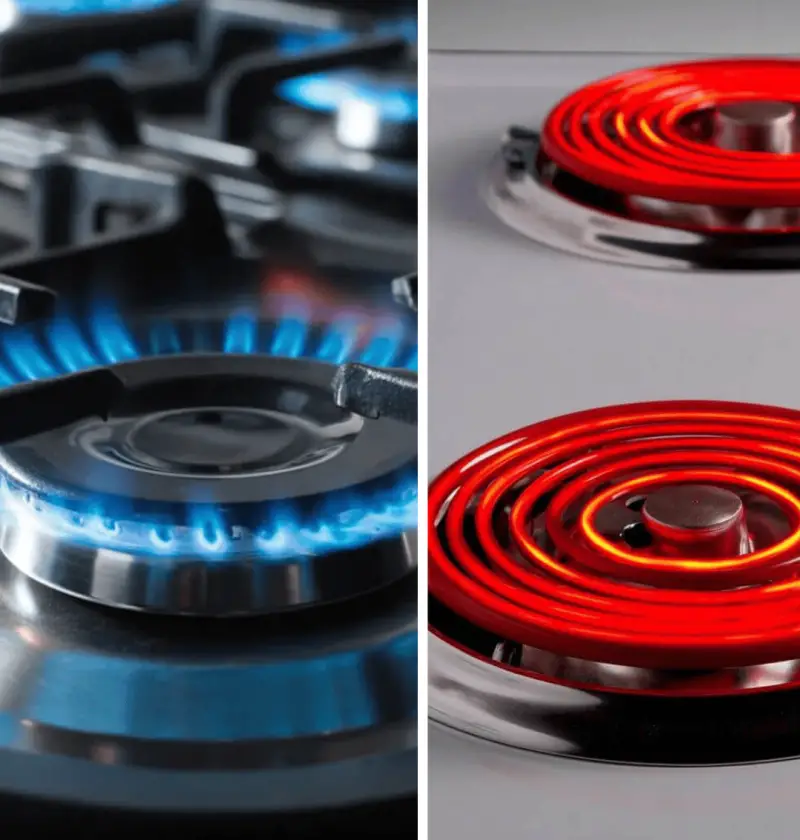Save This Recipe
Alright, let’s talk stoves—because if you’ve ever tried to boil pasta on a burner that takes forever to heat up, you know this isn’t just a “kitchen appliance” debate. It’s personal.
Back when I was in my twenties, I rented this little place that had an old electric stove with burners so lopsided, my pans used to slide off if I wasn’t watching. I burned more grilled cheese sandwiches than I care to admit. Then years later, I moved into a house with a gas range, and I felt like Julia Child herself. That open flame? It made me feel like I had superpowers. But guess what—I still burned stuff. So yeah, both have their quirks.
Let’s get into the nitty-gritty, shall we? Because whether you’re shopping for a new stove or just tired of wondering if your slow burner is secretly judging you, there’s a lot to consider.
Why You’ll Have Opinions About This (Real Fast)
Here’s the short and sweet of it:
-
Gas heats fast and gives you that “real cook” vibe.
-
Electric bakes like a dream—hello, even heat!
-
Gas usually saves you money over time.
-
Electric’s safer (especially if you’ve got kids, pets, or a forgetful brain like mine).
-
Cleaning? Electric wins, no contest.
-
Gas lets you do fun stuff like toast tortillas right on the flame. Yes, really.
Now let’s break it all down like a good onion—layer by layer.
1. Price Tags & Bills: Gas Saves You Later
Okay, up front? Electric stoves are usually a little cheaper. You can snag a basic model for around $650, while gas ones tend to start closer to $800.
But hang on—it’s not just about what you pay at the store. Once that beauty is in your kitchen, gas tends to be cheaper to run. Depending on where you live, it might shave 10–30% off your utility bills every year. That adds up, y’all. Especially if you cook every day like I do.
That said, if your house isn’t already set up for gas, installing a gas line? Whew—get ready to write a big check.
2. Let’s Talk Safety—Electric Wins Here
There’s no way around it: electric stoves are just safer. No open flame, no risk of a gas leak, and no little hands getting too curious about flickering blue fire.
I mean, yes—electric burners can still burn you. And they’re sneaky, too. Sometimes they stay hot way after you’ve turned them off. But they won’t fill your kitchen with gas if something goes wonky.
If you’ve got a gas stove (especially one older than your last haircut), please get a carbon monoxide detector. Just do it. It’s like a seatbelt for your kitchen.
3. Gas Is FAST—Like, Soup’s-On-in-Seconds Fast
This is where gas stoves shine. You turn the knob, the flame pops up, and boom—you’re cooking. None of that slow warm-up business. If you’re stir-frying, searing, or boiling water while already running 15 minutes late, gas is your best friend.
Electric burners… well, they get there eventually. But it’s like waiting for your tea kettle to whistle when you’re already cranky.
4. Baking? Electric Is Your Golden Girl
If you’re the kind who bakes cookies “just because,” then you might want to lean electric. The dry, steady heat of electric ovens makes for gorgeous cakes, crusty casseroles, and perfectly risen banana bread.
Gas ovens? They tend to run a bit moist—something to do with how the gas burns—so things don’t always brown or crisp evenly unless you rotate your pans like you’re running a cooking show.
5. Gas Tops Just Do More
Let’s say you wanna toast a tortilla right on the flame for taco night (don’t knock it till you try it). Or char a pepper for that homemade salsa. Or even flambé something just to feel dramatic on a Tuesday. Gas can do that.
Electric? Not so much. You can fake it, sure, but it’s not the same. That open flame gives you a lot more range (pun absolutely intended).
6. If Cleaning Matters: Team Electric All the Way
Look, life’s too short to be wrestling with grimy grates. If you want something you can wipe clean with a sponge and a little elbow grease, glass-top electric stoves are the answer. Even coil burners aren’t too bad—you just lift ’em out, clean underneath, and you’re done.
Gas stoves? Bless them, but they’ve got parts on parts. Heavy grates, bits that never quite fit back in right, crumbs hiding in places you didn’t know existed… it’s a whole production.
Wait, What About Both?
Oh honey, I’m so glad you asked. Some fancy-schmancy ranges now come “dual-fuel”—gas burners on top, electric ovens below. It’s like having the best of both worlds in one gorgeous appliance. They’re not cheap, but boy, are they dreamy.
Also, let’s not forget induction cooktops. They’re electric, but way more responsive. Super fast, super sleek, and safer too (because they only heat the pan). You’ll need magnetic cookware, though—so check your pots with a fridge magnet before getting too excited.
Final Thoughts from My Kitchen Table
Truth is, there’s no one-size-fits-all answer here. It’s about how you cook. Are you a “get dinner on the table fast” kind of cook? Or more of a weekend baker who needs reliable heat? Do you have tiny humans running around, or are you dreaming of that crispy-edge cast iron cornbread?
Me? I’ve used both. Loved both. Cursed both. Right now, I’ve got a gas stove, but if it ever kicks the bucket, I’m seriously considering switching back. Especially now that my grandbaby’s crawling…
So tell me—what’s in your kitchen? What do you love about it? Hate about it? Got cleaning tips I should know about?
Let’s chat in the comments—I’ll bring the coffee.

